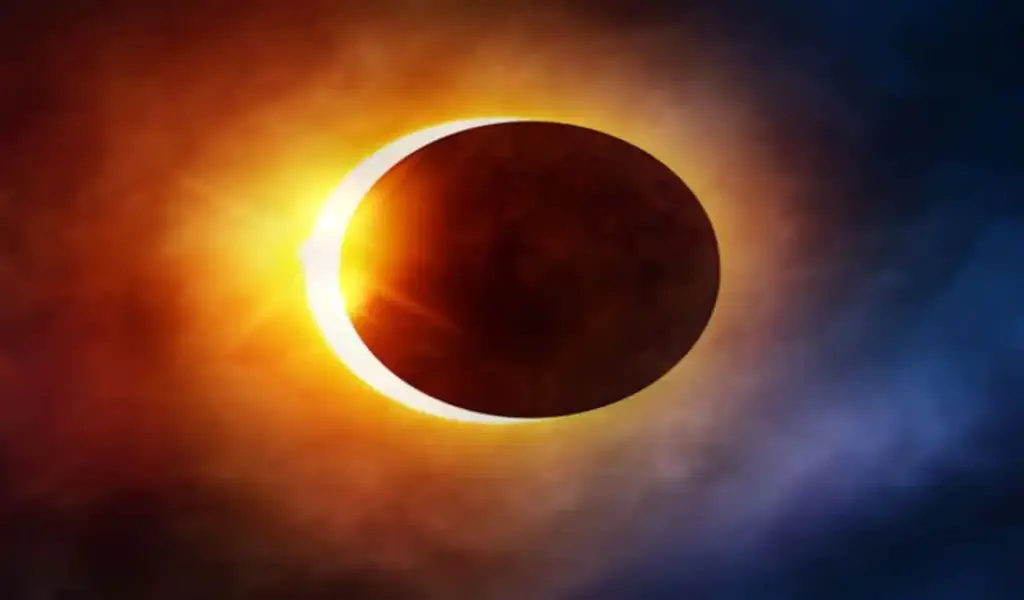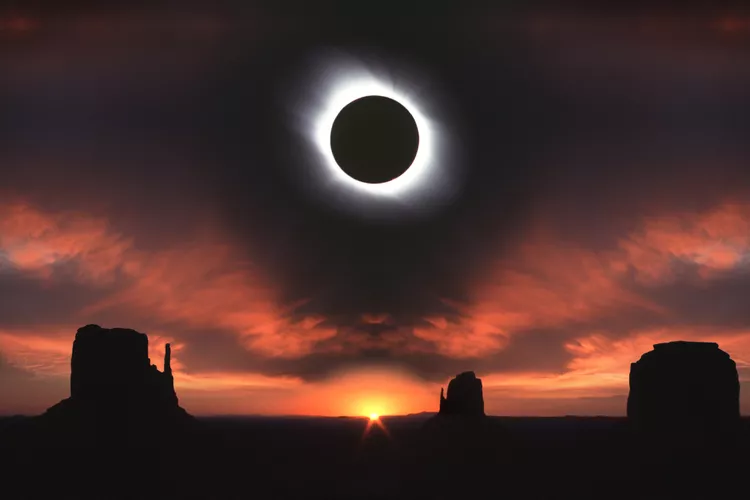Science
Where to Watch 2024 Total Solar Eclipse: Everything You Need to Know

(CTN News) – There’ll be a total solar eclipse in 2024, bringing everything to a halt as we all look up in awe as it goes through a big part of the country. Here’s what you need to know about the eclipse in 2024, plus some tasty snacks to eat.
What Is a Total Solar Eclipse?
Solar eclipses happen when the moon is between Earth and the sun and casts a shadow over Earth.”
The website added that there are different types of eclipses, including a total solar eclipse, in which the moon completely obscures the sun; a partial eclipse, in which the moon does not completely block out all of the sun’s light; an annular solar eclipse, in which the moon is centered in front of the sun but does not cover the entire surface (this is when a “ring of fire” is visible); and a hybrid solar eclipse, which Space.com describes as “the rarest solar eclipse.”
This total eclipse, a combination of a total eclipse and an annular eclipse, sees the moon’s shadow move over the Earth.
How Often Does This Happen?
A solar eclipse only happens during a new moon phase, so it’s rare. NASA says two to five solar eclipses yearly are only visible in certain places. According to NASA, “most eclipses appear partial from one location, regardless of whether the event is total or annular.” The path of totality typically covers “less than 1% of the Earth’s surface.”
Something is shocking: “On average, it’s about 375 years between two total solar eclipses.” However, the interval can sometimes be much longer!” Several communities in the U.S. will see eclipses in 2017 and 2023 when the 2024 eclipse passes by.
What’s The 2024 Total Solar Eclipse Path?
It’ll enter the U.S. through Texas, then go northeast through Arkansas, Missouri, Kentucky, Illinois, Indiana, Ohio, Pennsylvania, New York, Vermont, and New Hampshire, before leaving through Maine. On science.nasa.gov, you can see the exact path of totality and specific timings.
What Time Is the Total Solar Eclipse Happening and How Can I Watch?
That depends on where you’re going. In North America, the eclipse path enters through Mexico at 11:07 a.m. PT and makes its way to Texas at 1:27 p.m. CDT. It leaves the country at 3:35 p.m. ET. Based on your ZIP code, NASA has a tool to tell you an approximate time. Time and Date will stream the event if you’re not near the path of totality.
Are There Any Food and Beverage Offerings for the Eclipse?
Almost every company under the sun is getting in on solar eclipse mania. Sonic’s Blackout Slush Float is already out there, while Jeni’s Ice Cream is releasing four new ice cream flavors with intergalactic backgrounds. And they’re not the only ones.
Oreo is releasing a Space Dunk Oreo Cookie, a drink served during the 2017 eclipse. Applebee’s is offering its Perfect Eclipse Margarita at some locations. Check with your nearest town for deals and parties at restaurants and hotels along the totality’s length.
Is It Safe to Eat During an Eclipse?
NASA wants to put the kibosh on the myth that food prepared during an eclipse might be poisoned by radiation.
In a blog post, NASA wrote, “Total solar eclipses are terrifying, and their ghostly green coronas look scary, so it’s natural to want to make up fearful stories about them and find coincidences everywhere around you.”
Even though hundreds of people at the same location were not affected by the eclipse, some might argue that an accident with potato salad was related to the eclipse itself if someone gets food poisoning during an eclipse. Don’t worry, eat your snacks.
How to Watch an Eclipse Safely
While an eclipse isn’t as dangerous as you think, you should wear approved eyewear or a handheld solar viewer. As opposed to regular sunglasses, eclipse glasses are “thousands darker and should meet the ISO 12312-2 international standard,” NASA said. Check out Space.com’s list of approved eyewear.
Moreover, NASA says photographers shouldn’t look at the sun with a camera lens; viewers shouldn’t look at it with a telescope, binoculars, or any other optical device while wearing eclipse glasses or using a handheld solar viewer. The concentrated solar rays will burn through it and hurt your eyes..”
However, if you don’t have eclipse glasses, you can use a pinhole projector, “such as a hole punched in an index card,” to project the sun’s image onto any flat surface nearby. The eclipse makes for a fun science experiment anyway, and you can find all there is to know about it at science.nasa.gov.































